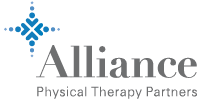
The vestibular system consists of peripheral sensors in the inner ear and integrative centers in the brainstem, cerebellum and somatic sensory cortices. These organs work together to create your proprioception, or your awareness of your body’s location, movements and actions. This is also known as kinesthesia. If your proprioception or your ability to walk has been compromised, your doctor may recommend vestibular rehabilitation.
Vestibular rehab therapy can help you recover from many different injuries, medical conditions, and balance and gait disorders. The most widely used set of exercises is sometimes referred to as Cawthorne-Cooksey exercises. These are simple movements that help you improve your sense of where you are in relation to your environment and your hand-eye coordination.
This article will describe vestibular rehabilitation therapy and how it can help you.
What is vestibular rehabilitation therapy?
In vestibular rehabilitation therapy, a physical therapist helps you with exercises and strategies for managing dizziness and balance issues. It’s an evidence based method of retraining your brain and body to do things like control your eye movement and maintain balance. Vestibular rehabilitation works by challenging your sense of balance or equilibrium. This usually involves strengthening exercises and stretches that can help you reduce dizziness and prevent falls.
A full course of vestibular rehab therapy can last six to eight weeks. You may need to do exercises once a day or several times, depending on your symptoms and your progress with therapy.
How can I benefit from vestibular rehabilitation?
Vestibular rehab therapy is helpful for people who have a disordered gait or stride from medical conditions like a stroke or even a foot or ankle injury. It can also be critical if you have sensory issues such as vertigo, migraines or labyrinthitis, which is inflammation of the inner ear. Avoiding movement as a result of these conditions can lead to worse overall health. You may lose muscle strength, range of motion and flexibility. Moreover, your balance and gait issues can get worse. Vestibular rehab therapy helps address these secondary concerns as well as your primary symptoms.
When your brain and body are out of sync, they can make mistakes processing sensory information about where you are in relation to your environment. These miscommunications can cause symptoms like dizziness and vertigo as well as an increased risk of falling. With vestibular rehabilitation, you can minimize the effects of these symptoms or potentially eliminate them.
When you first start vestibular rehab therapy, your exercises are likely to aggravate your symptoms before you start feeling relief. That’s because you’re challenging the sensory mechanisms that create your sense of balance and spatial awareness. As you get used to the exercises and start increasing your repetitions, you’ll get more comfortable moving around. Your physical therapist will tell you what exercises to start with and help you set incremental goals for adding more movement.
Vestibular rehabilitation can help with a number of different conditions that cause problems with balance and gait. Here are some examples:
- Foot issues like corns or bunions.
- Injuries such as fractures, tendinitis or sprains.
- Vision problems.
- Nystagmus.
- Inner ear issues like labyrinthitis, Ménière’s disease or vestibular neuritis.
- Osteoarthritis.
- Neurological conditions like Parkinson’s disease or multiple sclerosis (MS).
- Traumatic brain injuries.
- Aftereffects of stroke.
- Brain disorders.
What is vertigo?
Vertigo is much more than a fear of falling. Inner ear conditions like this one can come with symptoms that make it difficult or nearly impossible to go about your daily routine. Just turning your head or standing up from a seated position can cause nausea and vomiting, ringing in your ears, headaches, hearing loss, and more. Several medical conditions, behaviors, symptoms and medications can cause vertigo.
These are a few examples of conditions that can cause vertigo:
- Hyperventilation.
- Arrhythmia.
- Long periods of bed rest.
- Migraines.
- Strokes.
- Diabetes.
- Head injuries.
- Ear surgeries.
- Leakage of inner ear fluid into the middle ear.
- Tumors in the inner ear.
- Low blood pressure.
- Muscle weakness.
- Brain diseases.
- Multiple sclerosis (MS).
What are some examples of vestibular rehabilitation exercises?
There are plenty of vestibular rehab exercises you can do at home. However, if you’re dealing with any of the conditions mentioned in the previous section, it’s important to get assessed by a physical therapist. They’ll let you know what specific vestibular rehab exercises will be most helpful and how many repetitions you should do each time you practice. Generally, you’ll start with a few repetitions of the easiest exercises. Then you can increase the number of repetitions as you start adding more challenging movements.
If you’re not sure what’s causing your symptoms, your physical therapist may be able to help determine the cause. A physical therapist is a great resource for education about your condition. After an initial assessment, your PT will create a personalized treatment plan. This will include the exercises you need to do, how often you should do them and a plan for transitioning out of treatment. Your PT can help you learn vestibular rehab exercises at your own pace and find practical ways to do them at home. If necessary, they can assess your risk of falling at home and suggest modifications for your safety.
The first few times you try vestibular rehabilitation exercises, make sure there’s someone with you to prevent you from falling. Here are some examples of vestibular rehab exercises your PT may suggest:
- In a seated position, practice moving your eyes up, down, and from side to side.
- Still seated, add head movements. Bend your neck forward to look into your lap and backward to look straight up.
- Turn your head from side to side without moving your trunk.
- Rotate your shoulders forward and backward.
- Practice lying down from a seated position, swinging your legs to the left and to the right side.
- Place objects on the ground in front of you and beside you. Practice bending over forward and sideways to pick them up.
- In a standing position, repeat the same eye and head movements.
- Stand on one foot; then shift your weight to the other foot.
- Walk in a straight line.
- From a sitting position, stand up with your eyes open. Repeat with your eyes closed.
- Walk up and down a flight of stairs.
Alliance PTP is ready to help you find top-notch vestibular rehab therapy
Your first few vestibular rehab sessions might be uncomfortable, but your efforts will pay off. Keeping up with your vestibular rehab goals is the best way to get relief from your symptoms in the long run. Some people even notice improvements after just a few days.
Challenging yourself every day can help you appreciate your strength and feel a renewed sense of power and control. The greatest rewards will come when you’re able to get through your day without intense dizzy spells or worrying that you’ll fall. And your PT will be cheering you on all the way!
Because this type of physical therapy is all about spatial awareness, it can be helpful to find a vestibular rehab therapy provider near you. These exercises can be easier to navigate when you do them together in person.
At Alliance Physical Therapy Partners, we’re proudly bringing together physical therapy practices across the country to help people get the high-quality PT they need. We can put you in touch with an Alliance PTP partner that’s close to you and that can help you with vestibular rehabilitation.
Need to see a physical therapist from your home or workplace? All of our partners offer telehealth physical therapy as well.
Come find help for your injury or chronic condition today!
Get Help at a Location Near You
